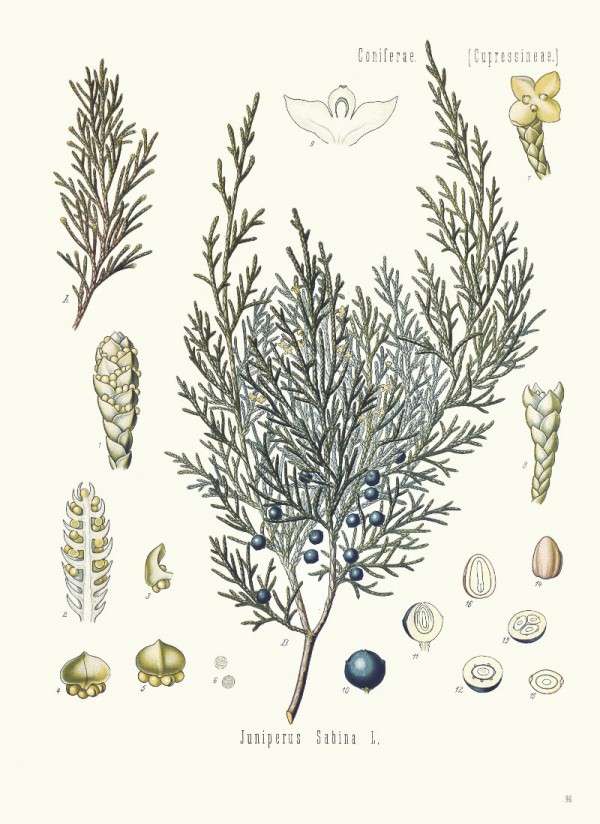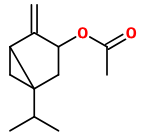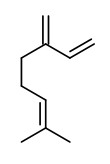Juniperus sabina L. - Cupressaceae - savin, Sadebaum, Stink-Wacholder
Evergreen shrub, 1-4m tall, native to central and southern Europe and western and central Asia; largely dioecious with separate male and female plants; leaves with two different leaf shapes: scalelike and needlelike; needlelike leaves usually present on seedlings and young plants, rarely present on adult plants (particularly on shaded shoots low in the crown), decussate or in whorls of 3, closely appressed, 3-7mm, bluish above, concave adaxially, convex abaxially, apex sharply pointed; scalelike leaves decussate, rhombic or rhombic-ovate, 1-2mm long, abaxial gland central, prominent, elliptic: Leaves have an unpleasant odor when crushed. efloras.org
„The chemical composition of the volatile oil of the leaves of local savin juniper and of commercial oil of savin was determined by an improved gas chromatographic technique. Both oils contain d-sabinyl acetate (38, 37.5%) and d-sabinene (30.5, 26%) as the major constituents. Smaller amounts of d,α-pinene, d-myrcene, d-limonene, γ-terpinene, p-cymene, d-isothujone, d-terpinen-4-ol, d-sabinol, d-citronellol, d-cadinene, and l-elemol were isolated. Trace amounts of α-thujene, camphene, α-terpinene, 1,8-cineole, terpinolene, thujone, geraniol, a cadinene isomer, and δ-cadinol were tentatively identified. A fraction having the typical pungent odor of juniper leaves was isolated, but it was found to consist mainly of the methyl ester of d-citronellic acid. Several unidentified oxygenated sesquiterpenes and a phenol ether were isolated in trace amounts. Some phylogenetic relationships with other thujone-bearing oils analyzed in this series are discussed.“
[Gas-liquid chromatography of terpenes: Part IX. The volatile oil of the leaves of Juniperus sabina L. Rudloff, E. V., Canadian Journal of Chemistry, Vol.41(11), 1963, 2876-2881]
„Bei äth. Ölen, die durch Wasserdampfdestillation gewonnen werden, scheint der pH-Wert des Destillationswassers einen Einfluß auf die Terpenzusammensetzung zu haben. Während der Destillation können säurekatalysierte Monoterpenumbildungen stattfinden, wie z. B. die Transformation von Sabinen in α- und γ -Terpinen, Terpinen-4-ol und Terpinolen, je nach Acidität des Wassers. Die Zweigspitzen von J. sabina wurden einer Wasserdampfestillation von 4 h in verschiedenen Pufferlösungen unterworfen (pH 2,2 bis 8). Das bei pH 5, was in etwa dem pH-Wert des Pflanzenmaterials in wäßriger Lsg. entspricht, erhaltene äth. Öl hat folgende prozentuale Zusammensetzung (GC-Analyse):
Sabinylacetat 37,2%, Sabinen 30,5%, Terpinen-4-ol 6,9%, β-Myrcen 3,8%, γ-Terpinen 3,7%, α-Terpinen 2,3%, Limonen 2,0%, α-Pinen 1,9%, Methylcitronellat 1,6%, δ-Cadinen 1,4%, Terpinolen 1,4%, *trans*-Sabinol
1,4%, Citronellol 1,2%, α-Thujon 0,9%, β-Thujon 0,6%, α-Terpineol 0,5%, *p*-Cymen 0,5%, *trans*-Sabinenhydrat 0,5%, β-Phellandren 0,4%, 1,8-Cineol 0,3%, *cis*-Sabinenhydrat 0,3%, α-Phellandren 0,2%, *cis*-2- *p*-Menthen-1-ol 0,2%, Citronellal 0,2%, *trans*-2- *p*-Menthen-1-ol, in Spuren α-Fenchen und Camphen.
Während der prozentuale Gehalt an Estern (Methylcitronellat, Sabinylacetat)im äth. Öl unter verschiedenen pH-Bedingungen konstant bleibt, sinkt der Gehalt an Sabinen sowie *cis*- und *trans*-Sabinenhydrat mit fallendem pH-Wert (Sabinen ca. 38% pH 8, ca. 7% pH 2,2), gleichzeitig nimmt der Gehalt an Terpinen-4-ol, α- und γ -Terpinen und Terpinolen zu (Terpinen-4-ol ca. 1% pH 8, ca. 20% pH 2,2).“
[Hagers Handbuch der Pharmazeutischen Praxis, Springer 2010]
„Juniperus sabina var. arenaria, the sand loving juniper, oil was found to be very similar to that of J. davurica, Mongolia, and J. sabina, on sand dunes in Mongolia. This suggests that J. sabina var. arenaria might be conspecific with J. davurica. Farjon's move (2001) of J. sabina var. arenaria out of J. chinensis is supported. Considerable differentiation was found in populations of J. sabina from the Iberian peninsula. Cedrol, citronellol, safrole, trans-sabinyl acetate, terpinen-4-ol and β-thujone were found to be polymorphic in several populations.“
[Geographic variation in the leaf essential oils of Juniperus sabina and var. arenaria. Adams, R. P., S. Nguyen and J. Liu. J. Ess. Oil Res. 18:497-502. 2006.] PDF
„The major components of the essential oils of fruits and leaves of male and female plant of J.sabina evaluated in this study were sabinene (48.6, 21.5 and 24.3 %), α-pinene, (8.1, 14.7 and 6.2 %) and myrcene (10.8, 6.8 and 7.6 %) respectively.“
[Chemical and antimicrobial studies of Juniperus sabina L. and Juniperus foetidissima Willd. essential oils. Asili, J., Emami, S. A., Rahimizadeh, M., Fazly-Bazzaz, B. S., Hassanzadeh, M. K., Journal of Essential Oil Bearing Plants, Vol.13(1), 2010, 25-36]

Köhler,F.E., Medizinal Pflanzen, vol.2, t.96 (1890) plantgenera.org
Juniperus sabina, Puchberg am Schneeberg © Rolf Marschner (2018) www.botanische-spaziergaenge.at



